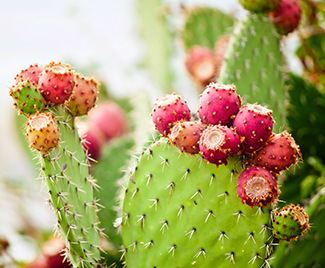Consuming The Desert Around You
Free Snacks: Compliments of the Desert!
Despite the dry arid climate, the desert southwest has supported human life for thousands of years. According to the Water Resources Research Center at University of Arizona:
"The Santa Cruz River Valley is one of North America's longest inhabited regions. The earliest evidence of human occupation dates back 12,000 years, prior to the existence of the Clovis peoples. The Clovis culture is generally regarded by archaeologists to be the ancestors of most Native American tribes. Around 4,000 prehistoric sites have been identified in the Santa Cruz watershed and exciting new discoveries continue to be made." - WRRC
Needless to say, life has thrived in the desert for thousands of years and where there is life, there is also a food and water source. There are an abundance of native plants that have provided food for people; this article will help you get started identifying those plants and which might make a good fit for your landscape.
Edible Plants of the Sonoran Desert
Please Note: Do not attempt to eat any desert plants unless you are 100 percent certain the plant is edible and that you are preparing it correctly.
We are lucky to live in a desert with a very large number of edible native, wild plants. This list below is only a sample. Be sure to explore the links and resources to expand your knowledge!
- Prickly Pear Cactus
- Remove the thorns and the prickly pear cactus pads and fruit can be eaten raw or cooked!
- The University of Arizona Cooperative Extension | Prickly Pear Cactus: Food of the Desert
- Mesquite
- In addition to many other uses for Mesquite, ground mesquite seed pods can make for a nutritious meal.
- The University of Arizona Cooperative Extension | Mesquite and Palo Verde Trees for the Urban Landscape
 Cholla
Cholla- Cholla buds and fruit are edible, however this cactus will really make you work for the food.
- The Edible Desert by Fill Your Plate/Arizona Farm Bureau
- Agave
- Agaves provide food, beverage, and fiber as they have done for thousands of years. You can eat the heart of the agave and make intoxicating beverages from the juices!
- The University of Arizona Cooperative Extension | Agaves and their Relatives
- Saguaro
- There are tons of uses for the Saguaro for humans and animals alike! You can eat the fruit from the saguaro fresh, dried, or baked. Through various processes and different parts of the saguaro, you can to make syrup, wine and even flour for baking.
- The University of Arizona Cooperative Extension | Campus Arboretum
- Barrel Cactus
- The fruit of the barrel cactus happens to be the only cacti fruit without spines. That means you can pick and eat the fruit raw right off the plant. It is safe to consume both the flesh and the seeds inside raw or cooked.
- Edible Desert Plants - Barrel Cactus Fruit
- Pines
- While there are a variety of pines in Arizona, they all have in common that their pine nuts are edible.
- The University of Arizona Cooperative Extension | Pines of Arizona
- Hedgehog Cactus
- The fruit is safe to eat. The pulp and juice can be eaten raw or preserved.
- The University of Arizona Cooperative Extension | Krutch Garden Tour
#DesertHarvest
###
Photo Credits:
- Shutterstock
RELATED CONTENT:
- Resource: The Edible Desert by Fill Your Plate/Arizona Farm Bureau
- Resources: Edible Desert Plants
- Resource: Water Resources Research Center at University of Arizona
- Resource: 5 Edible Desert Plants
- Resource: Desert Harvesters | Appreciating the Native Foods of the Sonoran Desert
- Resource: Firefly Forest
- Book: Sonoran Desert Food Plants by Charles Kane
- Book: Plants of Arizona
- Book: Wild Edible Plants of Arizona
- Book: American Indian Food & Lore
- Book: Arizona Wildflowers: A Year-Round Guide To Nature's Blooms (recipes in the back!)
- Book: Food Plants of the Sonoran Desert by Wendy C. Hodgson

